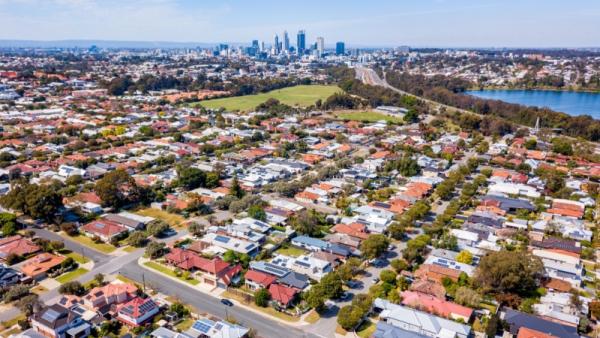Australian housing availability and affordability: The impact of Chinese investment and migration
bmphotographer / Shutterstock

James Laurenceson, Director, Australia-China Relations Institute, University of Technology Sydney |
According to the UTS:ACRI/BIDA Poll 2023, 73 percent of Australians take the view that ‘Foreign buyers from China drive up Australian housing prices’, while 68 percent say that ‘Chinese investors have negatively affected the rental market for residential real estate in Australia’. Similar proportions were found in 2021 and 2022. Recently, the Australian government and opposition have arguably fueled such perceptions by explicitly tying migration to domestic housing affordability and availability. The facts, however, are more equivocal.[1][2][3]
1. Foreigners are not permitted to purchase Australian residential real estate without first obtaining approval from the Foreign Investment Review Board (FIRB). The current application fee is $14,100 for new dwellings and $42,300 for established dwellings.[4]
2. In 2023, the total value of Australian residential real estate sales stood at $613 billion, comprising 670,000 transactions. Amongst international investors, those from the People’s Republic of China (PRC) were the single largest group. However, by way of comparison, in 2022-23, there were 2,601 approved proposals from Chinese investors, totaling $3.4 billion, and not all FIRB-approved proposals come to fruition.[5][6]
3. The Australian Tax Office (ATO) has been responsible for ensuring compliance with foreign investment rules since 2015. Since July 1 2016, the ATO has been compiling a register of residential real estate by tracking settlements. According to this register, in 2021-2022 (the latest year for which data are publicly available), there were 4,228 residential real estate purchases with a level of foreign ownership (i.e., not just Chinese ownership), totaling $3.9 billion. During the same period, there were 2,349 sales by foreign persons, totaling $2.1 billion. In other words, net purchases stood at $1.8 billion.[7][8]
4. Foreign buyers not residing in Australia are generally only permitted to purchase new housing. This reflects an Australian government assessment that foreign investment in new housing increases domestic supply – improving affordability, creating construction sector jobs and bolstering government revenues.[9]
5. Foreign buyers who are temporary residents, such as international students, can only purchase an established dwelling for the purposes of living in while in Australia. The property must be sold when they are no longer residents. In 2019, there were 212,001 PRC nationals in Australia on a student visa. This fell to 156,858 in 2022 and now stands at 148,121. Between 2018-19 and 2022-23, of individuals born in the PRC, the sum of net migration to Australia totaled 30,350. This is compared with 258,370 from India and 1.1 million in total.[10][11][12]
6. Foreign owners of Australian residential real estate must pay an annual vacancy fee if properties they own are either not lived in by themselves (or a relative) or not made available as a residence on the rental market for at least six months of a given year. The vacancy fee is double the original foreign investment application fee.[13]
7. To test the sensitivity of Australian residential real estate prices to Chinese investment, a recent peer-reviewed article in Housing Studies, a leading international journal for developments in the housing field, used controls on outbound capital imposed by the PRC government in 2017 as a natural experiment. Focusing on Sydney, only a limited number of suburbs with large concentrations of Chinese residents, such as Chatswood, revealed any significant impact.[14]
Endnotes
[1] Elena Collinson and Paul Burke, UTS:ACRI/BIDA Poll 2023 - The Australia-China Relationship: What do Australians Think?, Australia-China Relations Institute, University of Technology Sydney, July 11 2023 <https://www.uts.edu.au/acri/research-and-opinion/polling/utsacribida-poll-2023>. The poll instrument advised respondents that ‘China’ used throughout the poll referred to the People’s Republic of China (PRC).
[2] Elena Collinson and Paul Burke, UTS:ACRI/BIDA Poll 2023 – The Australia-China Relationship: What do Australians Think?, Australia-China Relations Institute, University of Technology Sydney, May 12 2022 <https://www.uts.edu.au/acri/research-and-opinion/polling/utsacribida-poll-2022>; and Elena Collinson and Paul Burke, UTS:ACRI/BIDA Poll 2022 – The Australia-China Relationship: What do Australians Think?, Australia-China Relations Institute, University of Technology Sydney, June 15 2021 <https://www.uts.edu.au/acri/research-and-opinion/polling/utsacribida-poll-2021-australian-views-australia-china-relationship>.
[3] See, e.g., Nick Evershed and Josh Nicholas, ‘Migration has been blamed for the housing crisis, but it’s not that simple’, The Guardian, May 30 2024 <https://www.theguardian.com/news/datablog/article/2024/may/30/migration-has-been-blamed-for-the-housing-crisis-but-its-not-that-simple>.
[4] Australian Taxation Office, ‘Fees for foreign residential investors’, accessed May 29 2024 <https://www.ato.gov.au/individuals-and-families/investments-and-assets/foreign-investment-in-australia/fees-for-foreign-residential-investors>. The figures cited are for dwellings with prices up to $1 million. Higher priced dwellings attract higher applications fees.
[5] PEXA, PEXA Property Insights Report – Calendar Year 2023, February 2024 <https://www.pexa.com.au/content-hub/property-insights-report-2023/>.
[6] Australian Government Department of the Treasury, Quarterly Report on Foreign Investment – 1 July 2023 to 30 September 2023, February 8 2024 <https://foreigninvestment.gov.au/news-and-reports/reports-and-publications/quarterly-report-foreign-investment-1-july-30-september-2023>.
[7] Australian Government Department of the Treasury and Australian Taxation Office, Managing Compliance with Foreign Investment Obligations for Residential Real Estate, Australian National Audit Office, June 19 2018 <https://www.anao.gov.au/work/performance-audit/compliance-foreign-investment-obligations-residential-real-estate>.
[8] Australian Taxation Office, ‘Register of foreign ownership of residential land: Insights into foreign purchases and sales of residential real estate for the period 1 July 2021 to 30 June 2022’, accessed May 29 2024 <https://foreigninvestment.gov.au/sites/foreigninvestment.gov.au/files/2023-10/res-insights-report-2021-22_0.pdf>.
[9] Parliament of the Commonwealth of Australia, Report on Foreign Investment in Residential Real Estate, November 27 2014 <https://www.aph.gov.au/Parliamentary_Business/Committees/House/Economics/Foreign_investment_in_real_estate/Tabled_Reports>.
[10] Foreign Investment Review Board, ‘Guidance note 1: Residential real estate - Overview’, accessed May 29 2024 <https://foreigninvestment.gov.au/sites/firb.gov.au/files/guidance-notes/01_GN_FIRB_1.pdf>.
[11] Australian Government Department of Education, ‘International student numbers by country, by state and territory’, accessed May 29 2024 <https://www.education.gov.au/international-education-data-and-research/international-student-numbers-country-state-and-territory>.
[12] Australian Bureau of Statistics, ‘Overseas migration’, December 15 2023 <https://www.abs.gov.au/statistics/people/population/overseas-migration/2022-23-financial-year>.
[13] Australian Taxation Office, ‘Fees for foreign residential investors’, accessed May 29 2024 <https://www.ato.gov.au/individuals-and-families/investments-and-assets/foreign-investment-in-australia/fees-for-foreign-residential-investors>.
[14] Song Shi and Xunpeng Shi, ‘The impact of Chinese regulation of limitation on currency transactions (LCT) on Sydney housing prices’, Housing Studies, June 2024, pp. 1-22 <https://doi.org/10.1080/02673037.2023.2222675>.
Author
Professor James Laurenceson, Director, Australia-China Relations Institute, University of Technology Sydney

